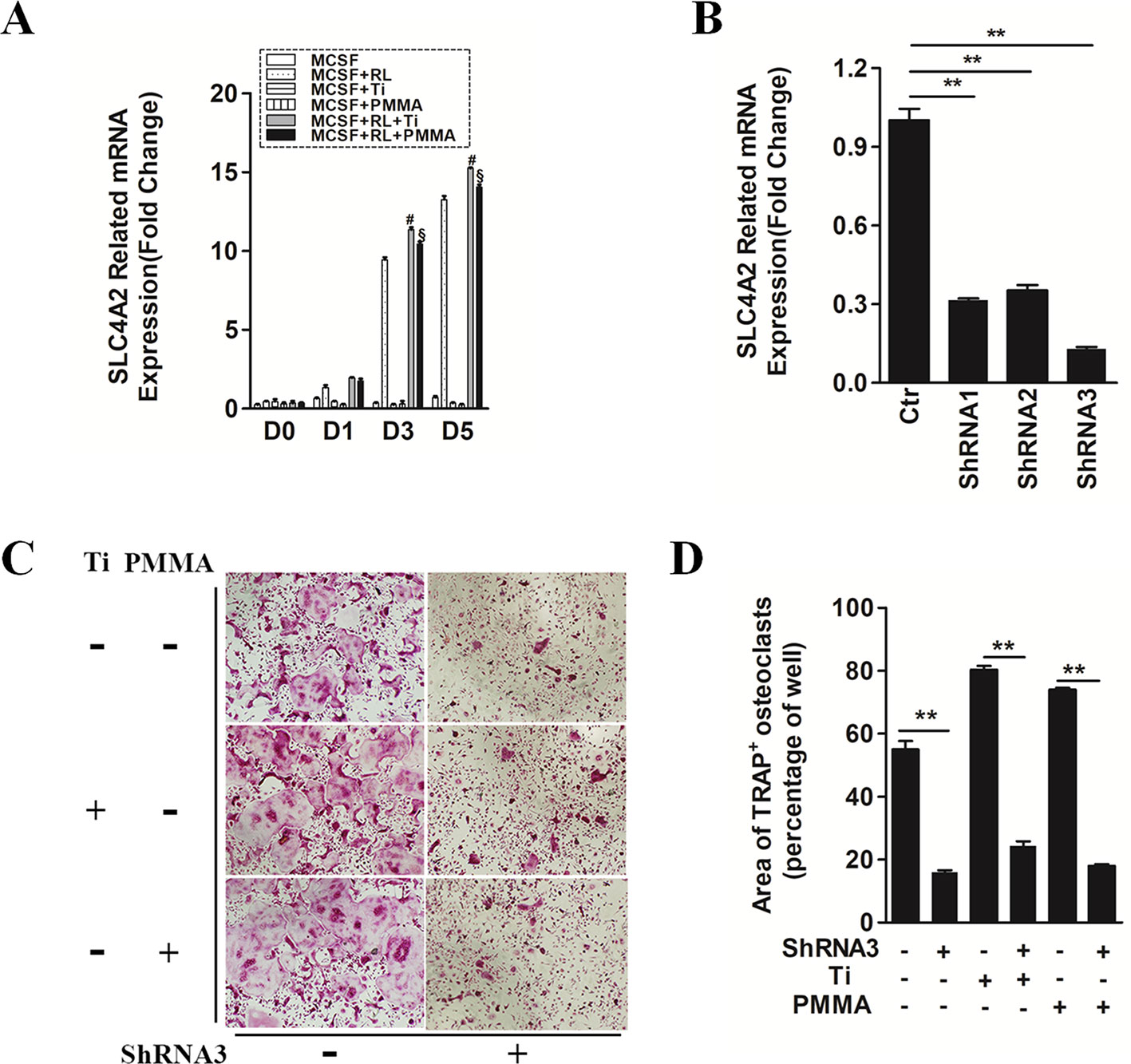- 1Shanghai Key Laboratory of Orthopaedic Implants, Department of Orthopaedics, Ninth People’s Hospital, Shanghai Jiao Tong University School of Medicine, Shanghai, China
- 2Department of Orthopaedics, Ruijin Hospital, Shanghai Jiao Tong University School of Medicine, Shanghai, China
- 3Department of Orthopaedics, The First Affiliated Hospital, Nanchang University, Nanchang, China
- 4State Key Laboratory of Oncogenes and Related Genes, Shanghai Cancer Institute, Renji Hospital, Shanghai Jiao Tong University School of Medicine, Shanghai, China
- 5Department of Orthopaedics, Sixth People’s Hospital, Shanghai Jiao Tong University, Shanghai, China
A Corrigendum on
Targeting Anion Exchange of Osteoclast, a New Strategy for Preventing Wear Particles Induced-Osteolysis
by Wu C, Liu X, Sun R, Qin Y, Liu Z, Yang S, Tang T, Zhu Z, Yu D and Liu F (2018). Front. Pharmacol. 9:1291. doi: 10.3389/fphar.2018.01291
In the original article, there was a mistake in Figure 1 as published. Figure 1C did not correctly match the description in the figure legend. The corrected Figure 1 appears below.

Figure 1 SLC4A2 plays an important role in wear particle-induced osteoclastogenesis. (A) Up-regulation of Slc4a2 gene expression in the process of wear particle-induced osteoclastogenesis. Bone marrow-derived macrophages (BMM) were used [#, MCSF+RANKL(RL)+Ti vs. MCSF+RL, P < 0.01; §, MCSF+RL+PMMA vs. MCSF+RL, P < 0.01]. (B) Three different shRNA vectors targeting Slc4a2, with shRNA3 yielding the greatest reduction in Slc4a2 mRNA. Effective knockdown of Slc4a2 in BMM cells, at 48 h after transfection using Slc4a2 shRNA1, shRNA2 and shRNA3, respectively. After transfection, cells were induced to differentiate into osteoclasts and harvested to examine Slc4a2 expression using reverse transcription quantitative PCR (RT-qPCR). (C) Effect of knockdown of Slc4a2, using shRNA3, on wear particle-induced osteoclastogenesis in vitro. (D) The area of TRAP-positive cells, measured using ImageJ (*P < 0.05; **P < 0.01). At least three independent replicated of each experiment were conducted separately.
The authors apologize for this error and state that this does not change the scientific conclusions of the article in any way. The original article has been updated.
Keywords: bone resorption, wear particle, osteoclast, SLC4A2, actin
Citation: Wu C, Liu X, Sun R, Qin Y, Liu Z, Yang S, Tang T, Zhu Z, Yu D and Liu F (2019) Corrigendum: Targeting Anion Exchange of Osteoclast, a New Strategy for Preventing Wear Particles Induced-Osteolysis. Front. Pharmacol. 10:1078. doi: 10.3389/fphar.2019.01078
Received: 13 August 2019; Accepted: 23 August 2019;
Published: 23 September 2019.
Edited and reviewed by: Maria Angela Sortino, University of Catania, Italy
Copyright © 2019 Wu, Liu, Sun, Qin, Liu, Yang, Tang, Zhu, Yu and Liu. This is an open-access article distributed under the terms of the Creative Commons Attribution License (CC BY). The use, distribution or reproduction in other forums is permitted, provided the original author(s) and the copyright owner(s) are credited and that the original publication in this journal is cited, in accordance with accepted academic practice. No use, distribution or reproduction is permitted which does not comply with these terms.
*Correspondence: Degang Yu, eWRnMTYzQDEyNi5jb20=; Fengxiang Liu, bGl1X2Zlbmd4aWFuZ0AxMjYuY29t
†These authors have contributed equally to this work
 Chuanlong Wu1,2†
Chuanlong Wu1,2† Xuqiang Liu
Xuqiang Liu Shengbing Yang
Shengbing Yang Fengxiang Liu
Fengxiang Liu